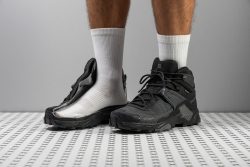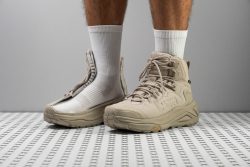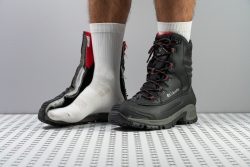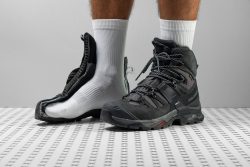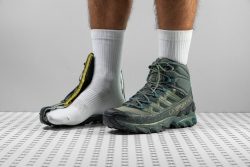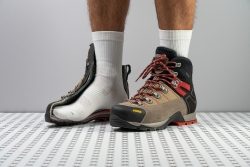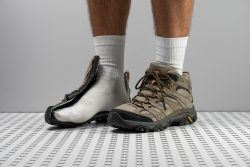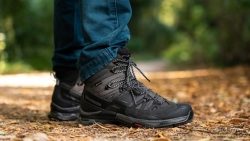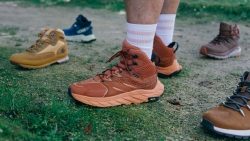7 Best Winter Hiking Boots in 2025
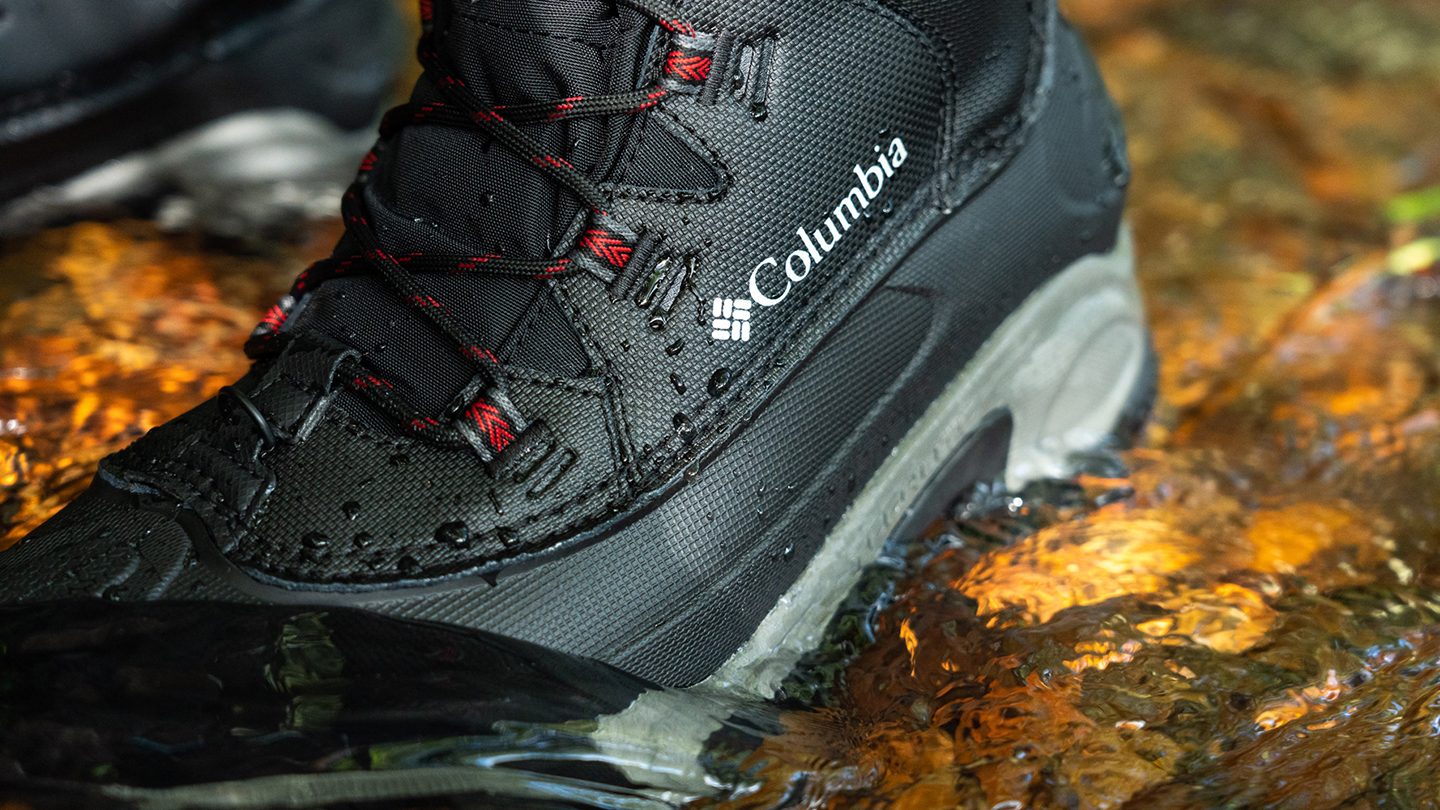
We buy shoes ourselves. We earn commissions when you buy through us, at no extra cost. Why trust us
No one wants cold feet during winter hiking. So, if you want to keep your toes warm and cozy on your next chilly hiking adventure, check out our list of best winter hiking boots.
Whether you want the warmest, the lightest, the most comfortable, or all-in-one boot, we’ve selected the best option in each category.
In addition, we included the need-to-know facts and tips on winter boots in the guide section.
How we test winter hiking boots
We believe that each hiking boot deserves our complete and utter attention, so we scrutinize them equally. We also buy them all on our own; there's no brand out there that is sending us shoes for free or telling us what we're allowed to publish.
After getting our hands on the boots, we wear them on treks and hikes on various trails. We make sure to expose the boots to different weather conditions to properly understand how much they breathe or trap heat.
In our lab, we test the breathability of hiking boots by pumping smoke into them and observing where it comes out and at what pace. We also measure the softness and flexibility of the boots at room temperature and after the boot has spent 20 minutes in the freezer. This allows us to elaborate on how the boot will feel and perform in cold weather, which is super important for winter hiking. We also have a standardized test on measuring forefoot traction.
Finally, we cut the shoes in half to reveal everything inside them.
Best winter hiking boots overall
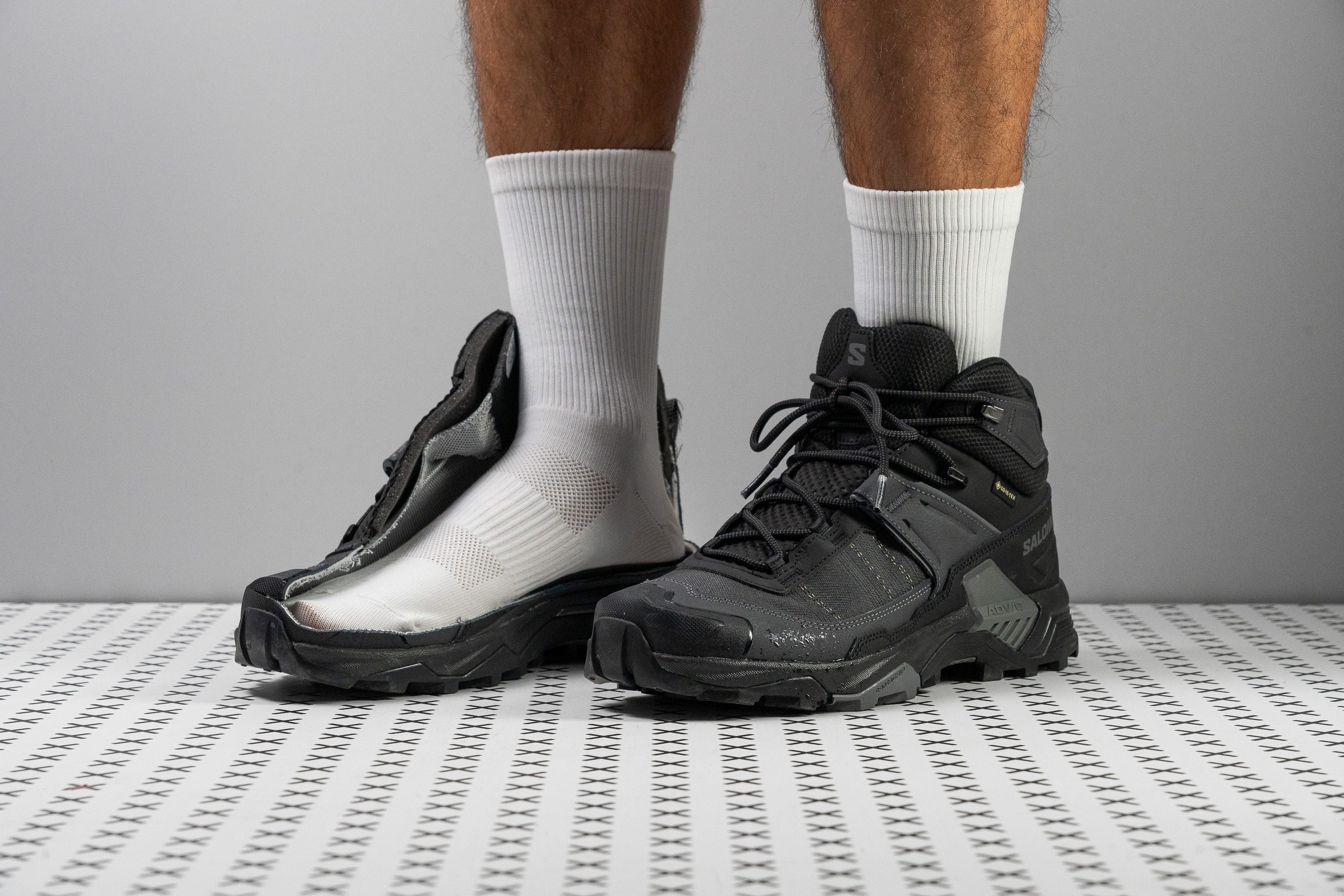











































What makes it the best?
Stable in a lightweight package, we found it easy to maneuver through snowy trails while using the Salomon X Ultra Mid GTX. Our lab work confirms its waterproof and windproof upper, making it our best winter hiking boot. It offers a great balance of torsional support and flexibility in the forefoot, allowing us to remain in control.
This boot combines a tightly woven Matryx upper with a Gore-Tex membrane, with no visible pores whatsoever. The combination completely seals the boot, leaving our feet warm and dry. We confirmed its airtight nature in our smoke test when not a single wisp of air could escape, receiving the lowest 1/5 breathability score.
Upon slicing the midsole, we understood why the boot offers solid support. It features the Advanced Chassis, which is a stiff brace that embraces our midfoot in place. As a result, the boot is tough to twist, earning the maximum 5/5 torsional rigidity score in our manual assessment.
Despite its sturdiness, it allows room for movement in the forefoot. In our bend test, it emerged 34.3% more flexible than average, maintaining a natural feel that boosts comfort. In addition, its minimal 15.4 oz (437g) build is a pleasant surprise. Weighing 17.7% below the average boot, it’s one less burden we have to worry about while climbing mountains and walking around town.
Unfortunately, it won’t satisfy hikers looking for deep cushioning. Therefore, we can’t recommend it to people dealing with foot pain and other conditions like plantar fasciitis.
Pros
- Stable and grounded platform
- Flexible forefoot adds maneuverability
- Great grip on wet terrain and rocks
- Surefooted on mixed and hilly trails
- Much lighter than average
- Excellent Gore-Tex waterproofing
- Tough and durable upper
Cons
- Minimal cushioning and shock absorption
- Not for deep mud
Winter hiking boots with the best shock absorption
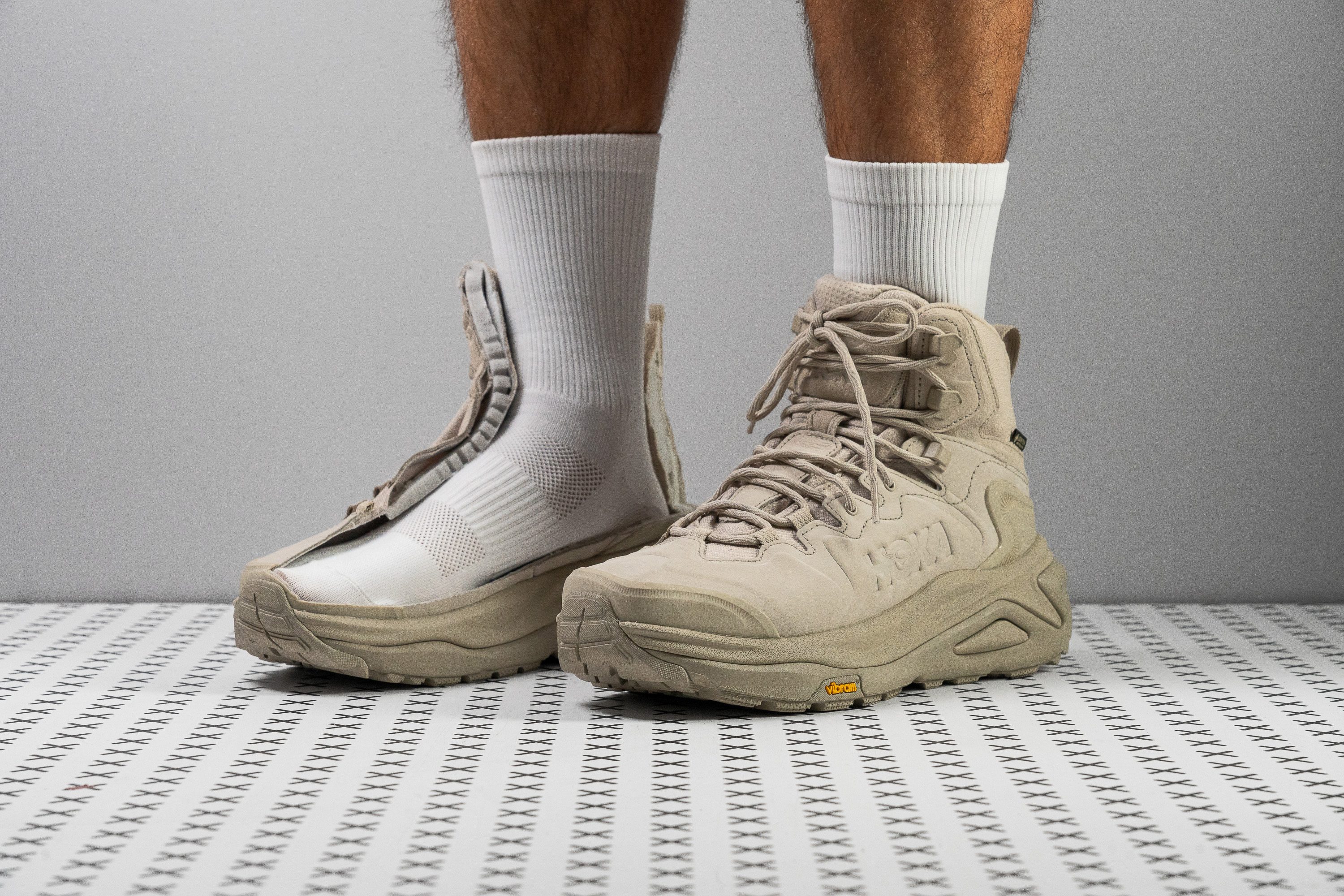
















































What makes it the best?
The Hoka Kaha 3 GTX captures our hearts with its immense comfort, from its deep cushioning to its warm embrace. We found it so cozy to be in as we navigate through icy streets, with the reliable Vibram outsole keeping us confidently steady. With top-level ratings in our lab tests, the Kaha 3 GTX takes the crown for best shock absorption in the winter hiking category.
Using our caliper, we measured the boot’s stack height at a sky-high 41.9/30.4 mm. Each footfall is heavily cushioned, with the foam itself reducing impact 29.0% more than average with its 120 SA score. It offers long-distance comfort and keeps our legs fresh even after a full day of hiking.
The Kaha 3 GTX is composed of impermeable nubuck leather and a Gore-Tex Invisible Fit membrane, working together to make the boot airtight. It manages to keep our feet warm and dry in freezing conditions, with no ventilation holes to allow winter winds to enter. In our smoke test, we confirmed its low breathability with a 1/5 score.
The Vibram Megagrip rubber enhances our control in slippery conditions with its strong 0.65 friction score in our traction test. Moreover, it consists of versatile 3.2 mm lugs that are effective on snow and not too intrusive on cement and asphalt streets.
With all its layers of padding and protection, it’s another bulky piece in our outfit, weighing 19.4 oz (550g). Hikers seeking a light, agile option should go for another boot.
Pros
- One of the best cushioned boots ever
- Extremely comfortable for long miles
- Highly stable and supportive
- Excellent traction on smooth surfaces
- Grips mixed and hilly terrain well
- Contains sustainable materials
- More streamlined than the Kaha 2
Cons
- Lugs got much shallower
- Heavier than average
Best 200g insulated winter hiking boots
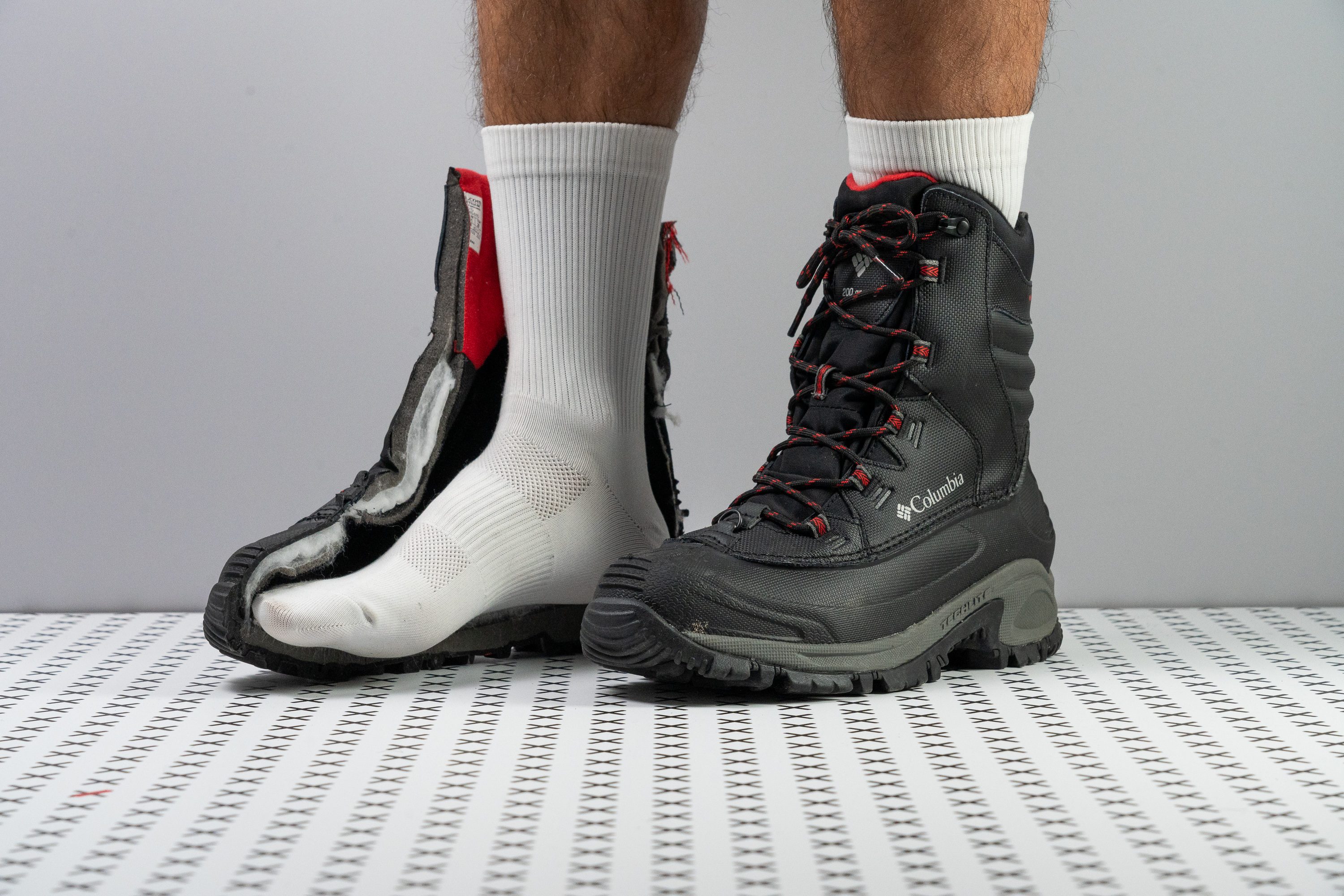































What makes it the best?
On freezing winter days, it’s time to bring out the Colombia Bugaboot III. The leather upper and insulated padding keeps our feet warm when it’s below 0°C outside. It is extremely durable, and has the perfect winter midsole, making it our best winter hiking boots with 200g of insulation.
Whether hiking in the wilds or shoveling snow in the driveway, the 200g of insulation packed around our feet keeps us warm in temperatures below freezing. Due to the leather upper, padding and 7-inch collar, the boots scored 1/5 in our breathability tests, making them some of the least breathable boots we’ve ever tested! It presents no problem in cold weather since frigid air can’t enter the boot, and snow has a hard time entering over the high collar. Freezing toes are a thing of the past.
This boot looks like a workhorse, keeping our feet protected from hidden objects in deep snow. It even passed our durability tests with flying colors! The heavily layered rubber toe cap stood up to our Dremel, with an impressively small amount of damage after 4 seconds. We awarded it the most durable rating of 5/5.
At room temperature, the midsole measures 27.5 HA, a little softer than the average of 29 HA. Not only does this make for a really comfy boot, but it still keeps our feet well-supported on our hikes. But where this shoe really comes up with the goods is in cold weather. We retested the midsole with a durometer after the boot had spent 20 minutes in the freezer, finding it had only become 21.5% firmer. We can still expect high-quality performance from this boot, even on a chilly winter’s day!
On the downside, when we tested it for flexibility, this boot turned out to be very stiff, requiring 58.3N to push it to 30°, making it 83.3% stiffer than average. For this reason we don’t recommend it to hikers looking for a more agile boot.
Pros
- Jaw-dropping comfort
- Remarkable insulation
- Watertight upper
- Excellent durability
- Plenty of cushioning
- High level of support
- Reliable grip
- Affordable for its kind
Cons
- Restrictive toebox
- Heavier than average
Best winter hiking boots for backpacking
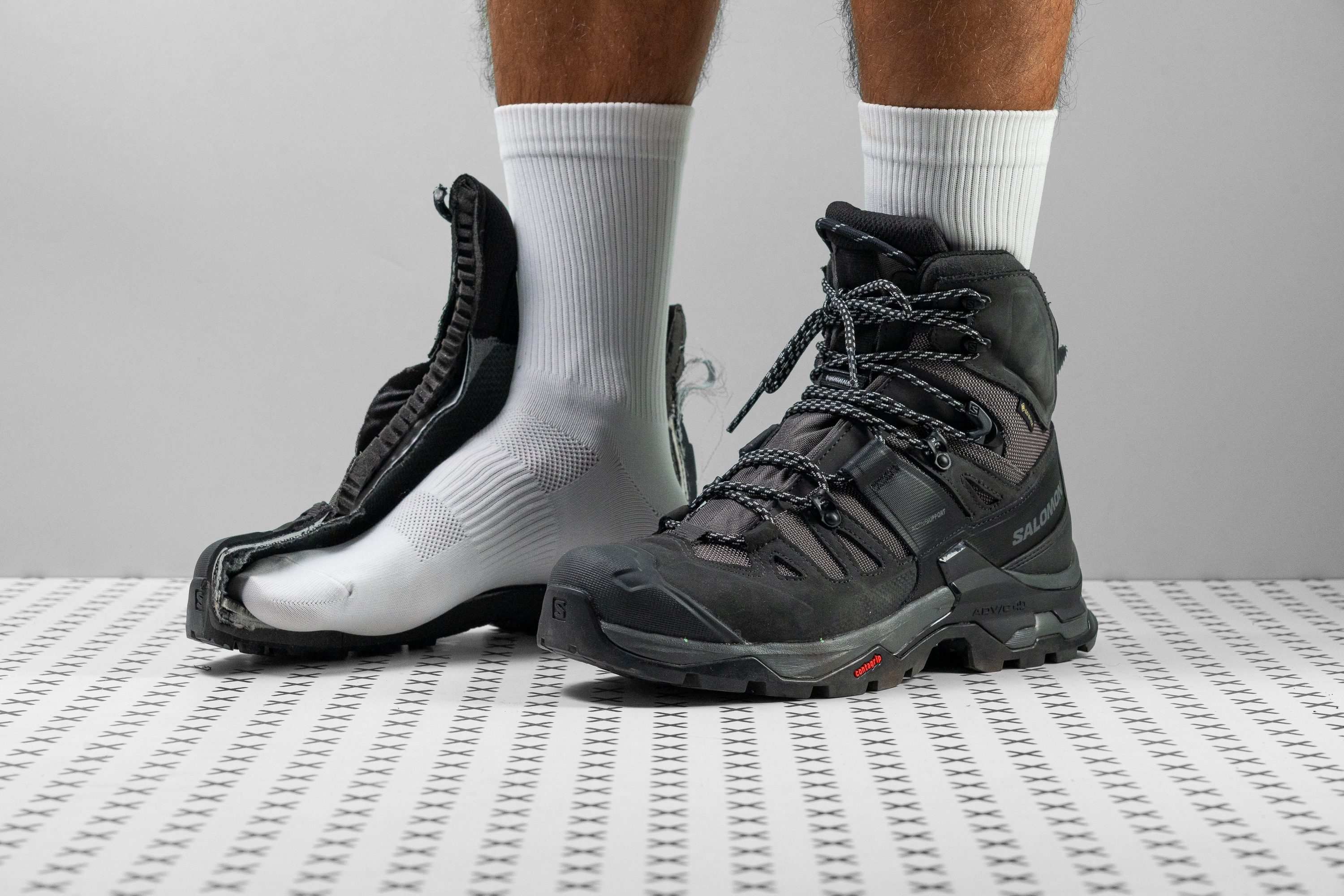















































What makes it the best?
Hikers looking for a do-it-all hiking boot for winter backpacking, it truly doesn’t get any better than the Salomon Quest 4 GTX. Astoundingly stable and supportive, especially while carrying a heavy pack, this boot kept our feet warm and dry on the coldest days and protected from unexpected bumps and scrapes.
Salomon’s reputable ADV-C 4D Chassis stabilizer in the midsole is once again put to work in the Quest 4 GTX. In the lab, we twisted the boot torsionally, awarding it the most rigid score of 5/5. It worked like a dream on our test hikes, and we found hiking over rough terrain while carrying a heavy load a breeze. The fully integrated system holds our feet and ankles firmly and we feel confident on rocky trails.
The Quest 4 GTX houses an impeccable Gore-Tex membrane which keeps our feet toasty and dry while hiking in snow or even stream crossings. The high collar and gusseted tongue stop water, snow, and debris from getting into the boot. We checked for breathability in the lab by pumping smoke into the boot and assessing how much smoke came out. It scored 1/5 for breathability, making it highly waterproof and warm - the perfect combination for winter hiking!
The Salomon Quest 4 GTX seriously outdoes itself in the durability department, with its rubber toe cap and sturdy upper. Returning from our test hike with barely a scratch to show for it, we put the boot to the test in the lab with our Dremel. After 12 seconds of exposure at 5K RPM and a force of 3.2N, there was only a minor scratch on the surface. We have no doubts that this boot is a force to be reckoned with!
At 23.4 oz (663g), the Salomon Quest 4 GTX is on the heavy side, compared to our lab average of 17.9 oz (508g) for waterproof hiking boots. Moderate hikers looking for something lighter may want to look at other options.
Pros
- Exceptional durability
- Top-notch waterproofing
- Excellent underfoot protection
- Highly secure ankle support
- Fantastic stability
- Comfortable in-boot feel
- Effective grip on various terrain
- Fits as expected
Cons
- A bit heavy
- Gets very stiff in cold
Best lightweight winter hiking boots
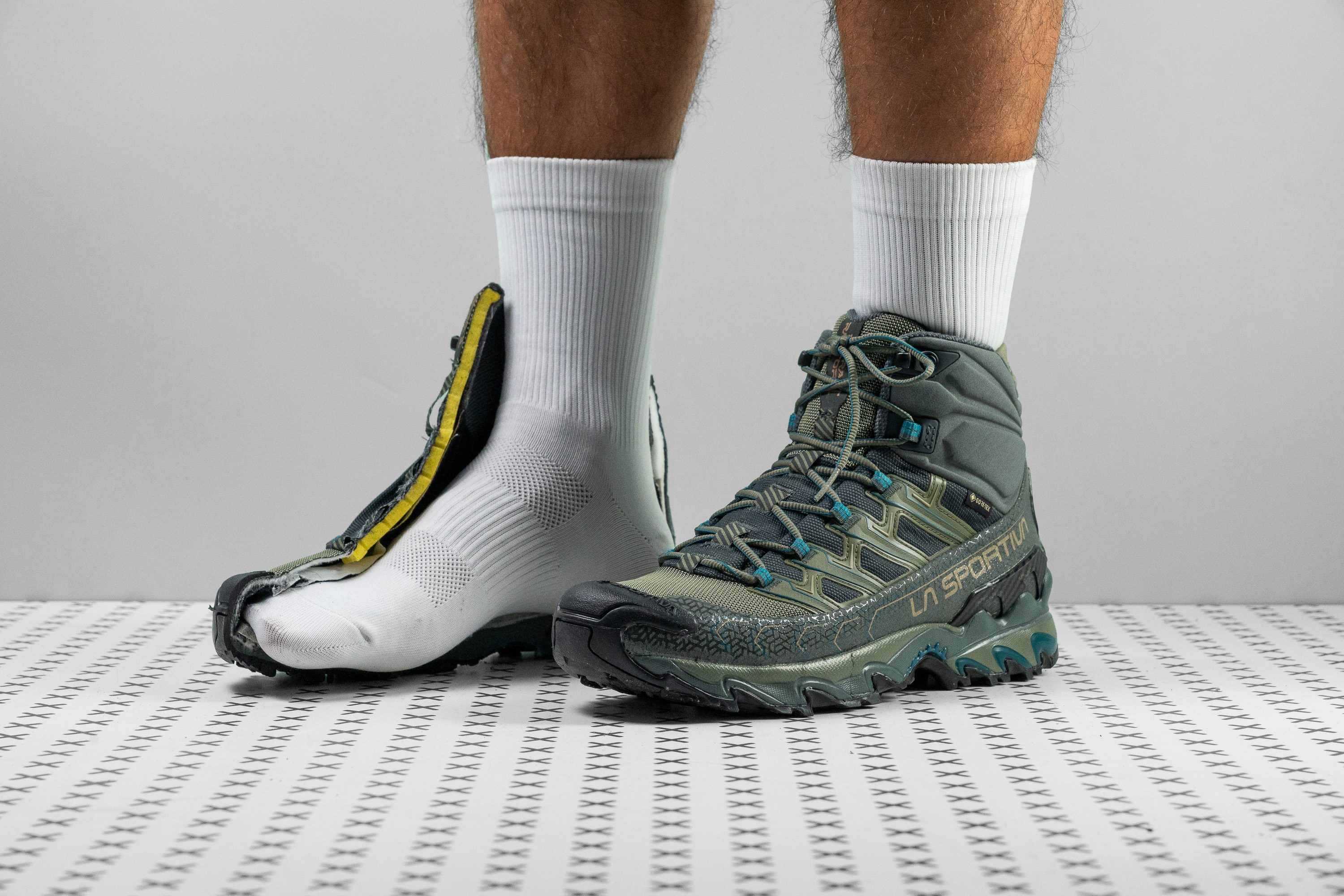















































What makes it the best?
After thorough testing both in the lab and out on the trail in all weather, we chose the La Sportiva Ultra Raptor II Mid GTX as our best lightweight winter hiking boots. This high-spec boot is unbelievably light for its category, and it retains its incredible performance under winter conditions by remaining comfortably flexible and grippy. There is so much to rave about in this boot!
Ultra-supportive boots of this caliber average around 17.9 oz (508g), but the Ultra Raptor II Mid surprised us by feeling light and nimble on our hikes. We weighed them back in the lab and discovered that they manage to knock an impressive 3.3 oz (93g) off the average. No wonder our legs still had energy to burn after a long day on the trail!
The delicious comfort that we experience while hiking in these boots comes in part from their ability to flex while keeping our feet supported. At room temperature, our flex test showed the boot to be 15.4% more flexible than average, but we were interested to know how that translates to winter conditions. Leaving it in the freezer for 20 minutes, we clamped it down once again and found it's 25.7% more flexible than those same boots in the cold! This truly is an excellent cold-weather hiking boot.
On the trail, we felt surefooted and stable on gravel, scree, mud, packed earth, and rock. In the lab, we measured the lug depth. Measuring 4.3 mm, they are only 0.2 mm deeper than average, but it’s the tread pattern that works its magic in all conditions. With a mix of narrow, toothy treads and broad ones, the Ultra Raptor II Mid GTX is able to adapt to changing terrain without a second thought.
Despite measuring 99.8 mm at the forefoot, which is around our lab average, all its protective overlays leave little room for breaking in the toe box of the Ultra Raptor II Mid GTX. Hikers with wide feet should be aware of this limitation, and head directly for the wide option.
Pros
- Unbelievably lightweight
- Excellent waterproofing
- Doesn't let debris and falling rain/snow inside
- Exceptionally robust and durable
- Phenomenal grip on technical terrain
- Not so stiff and firm in low temperature
- Sufficient impact protection
- Highly supportive collar
- Ample flexibility
Cons
- Narrow platform
- Not for wide feet
Winter hiking boots with the best support
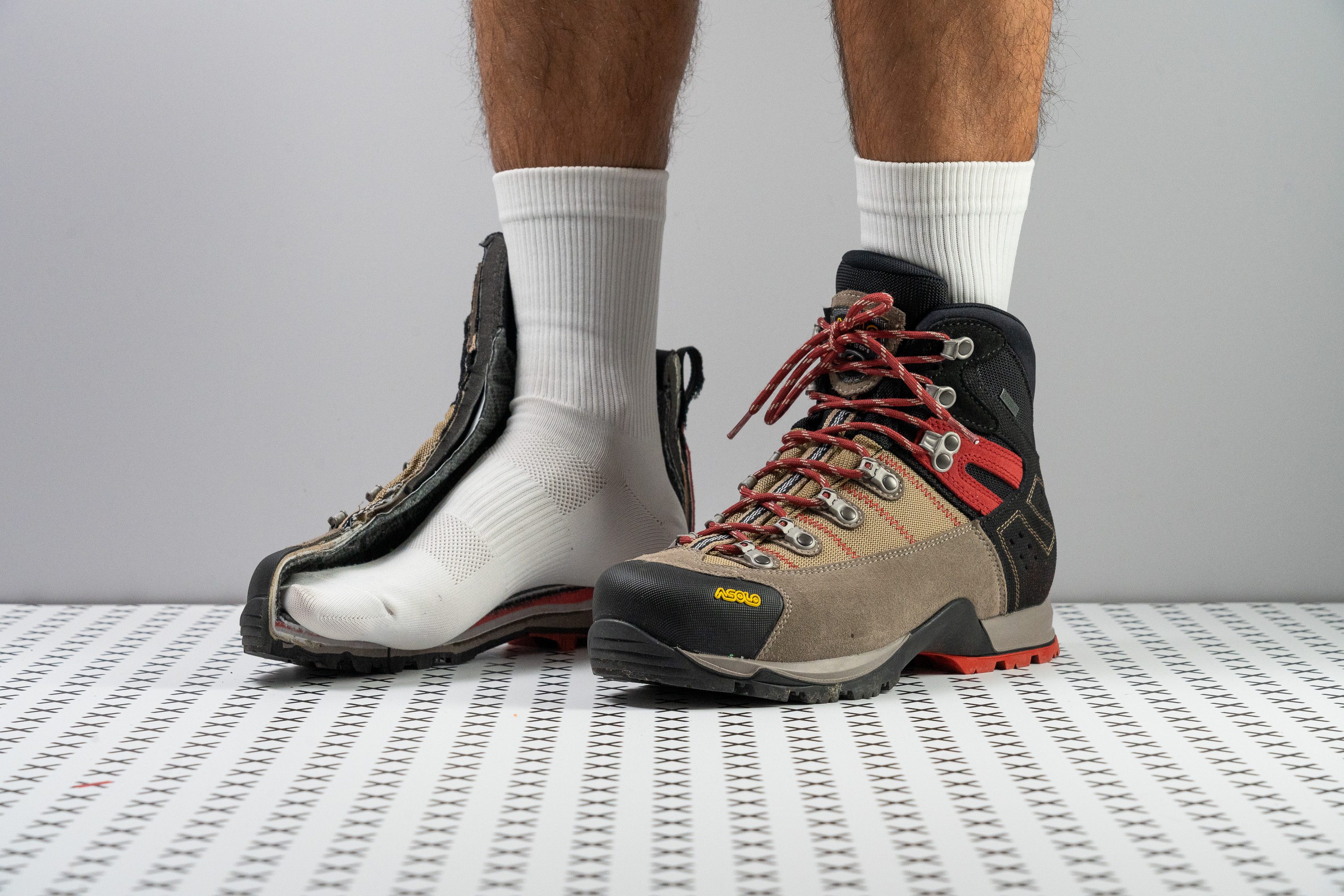



















































What makes it the best?
We cut open the best winter hiking boots in the lab and took them out for a spin in search of the most supportive boot — it’s no other than the Asolo Fugitive GTX. Its watertight, protective upper and firm cushion kept us safe from unwanted elements and delivered one-of-a-kind steadiness on snow.
With its water-repellant and heat-preserving construction, our feet stayed warm and dry through winter, leaving no excuses to skip our training. The mesh upper is so tightly woven that light barely passed through in our breathability test. Further ensuring our safety are the rubberized toe bumpers, suede upper, and fully gusseted tongue.
The firm cushion preserves our balance even as we tackle rocky and uneven terrains. The stacked heel ensures protection from sharp objects, while the modest forefoot balances it off with some ground feel. What also keeps us stable is the rigid build that prevents awkward foot movements. Our bend test confirms it’s a whopping 97.2% stiffer than average!
Grip is a must in icy routes, and Fugitive GTX keeps us steady on slick surfaces with its firm clasping traction and 3.6 mm various-shaped lugs.
While the outsole rubber is durable, its glue to the midsole is disappointing. After just a few test hikes, the outsole began to unpeel.
Pros
- Great grip on mixed terrain
- Fantastic underfoot protection
- Worth the price
- Waterproof
- Reliably supportive
- Feels light on the foot
- Zero break-in
- Balance preserver
Cons
- Outsole started peeling off
- Not-so-cushy footbed
Winter hiking boots with the best comfort
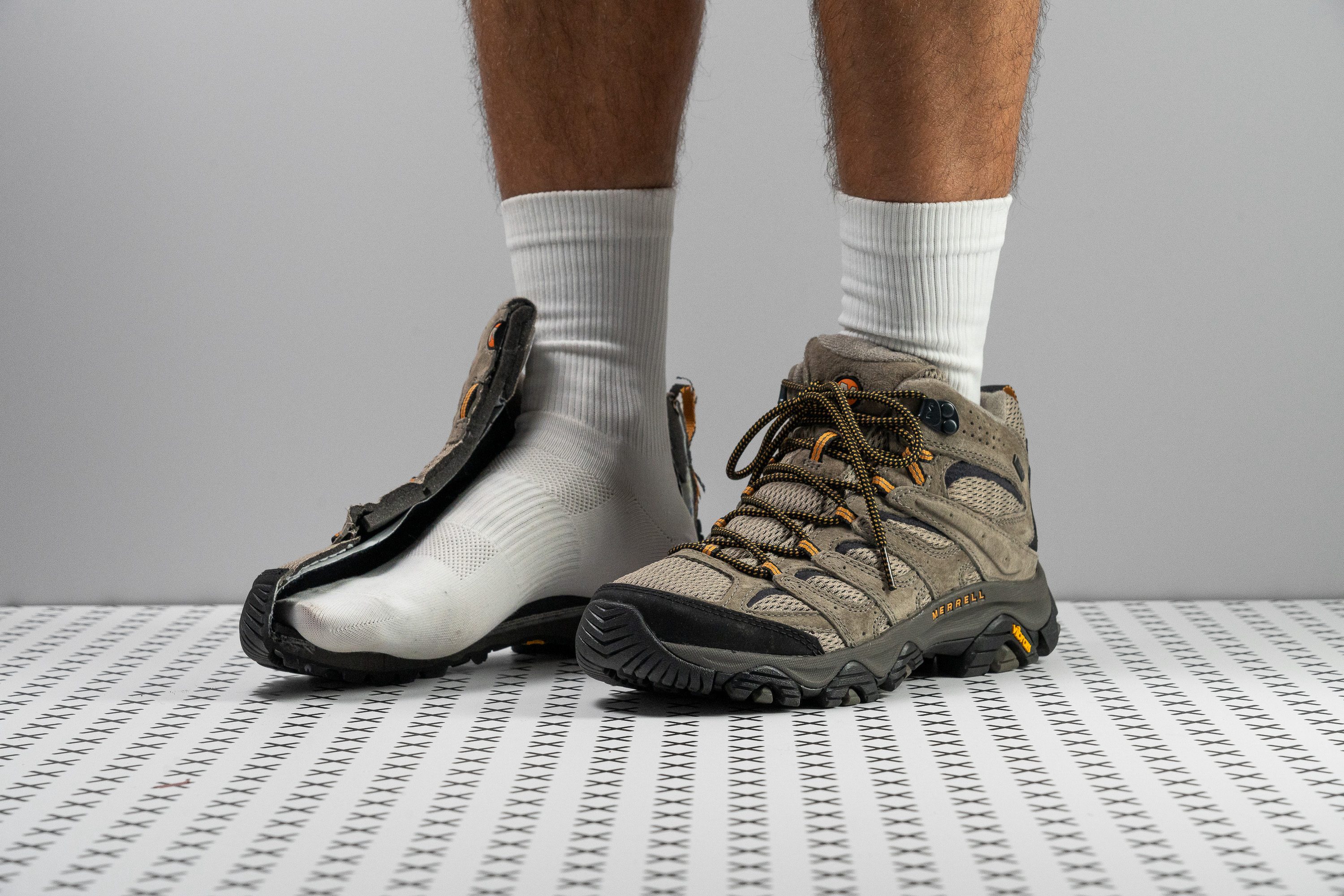




















































What makes it the best?
Winter hiking demands top-tier protection, especially in terms of keeping our feet warm. The Merrell Moab 3 Mid GTX does the job effectively, while offering protective cushioning in its light and maneuverable package. Ultimately, it leads in comfort among winter hiking boots.
On the trail, our feet felt light and nimble, so back in the lab, we weighed the pair to put a number to the sensation. Our scale shows the boot is only 17.5 oz (495g), making it 6.8% below the average. Moreover, it emerged as flexible as the average hiking boot in our roster, boosting its long-distance comfort and versatility.
The platform hit the sweet spot between cushioning and ground feel, featuring a 36.1 mm heel and a modest 22.6 mm forefoot. The midsole dampened each landing without losing surface feedback, and our shock absorption test confirms it’s a well-balanced 88 SA.
We came back from our snowy hikes and stream crossings with perfectly dry feet. We observed the Gore-Tex membrane in the lab and proved its impermeability in our smoke test. We immediately awarded it the lowest score of 1/5 in breathability, which is good news for effective waterproofing.
However, while its 5.0 mm lugs are deep, they are not sharp enough to handle soft terrain like fresh snow. Hikers who need more aggressive traction should find another boot.
Pros
- Best-in-class waterproofing
- Great stability for moderate hikes
- Supportive for all-day wear
- Comfortable step-in feel
- Excellent grip on hard terrain
- Secure lockdown
- Sturdy construction
Cons
- Moderate impact protection
- Mesh panels are easy to tear
- Not for mud or soft terrain
- Moderate impact protection
Warm, waterproof and grippy: winter hiking boots
There are 4 high-priority features to look for in winter hiking boots:
- Waterproofness: so that your feet stay dry even if you’re hiking in mud, snow, and slush.
- Grip: so that you don’t slip regardless of the terrain you’re on. It is essential, however, to know whether you’ll mostly be hiking on wet or dry terrain, as the depth of the lugs that is recommended varies depending on that.
- Warmth: if you plan to hike in very cold temperatures, consider getting insulated hiking boots. For mild winter days, it is usually enough to have waterproof hiking boots.
- Softness and flexibility that don’t change wildly as the temperature drops. In our lab, we test this because it is very important to know what to expect, will the boot feel similar to how it feels at room temperature, or will it feel more like a brick.
We will cover every feature mentioned above in great detail and add more nuances that are important to know when shopping for winter hiking boots.
We’re able to cover every little thing because we don’t just wear-test all the hiking boots, we also cut them in half and subject them to dozens of tests in our lab.
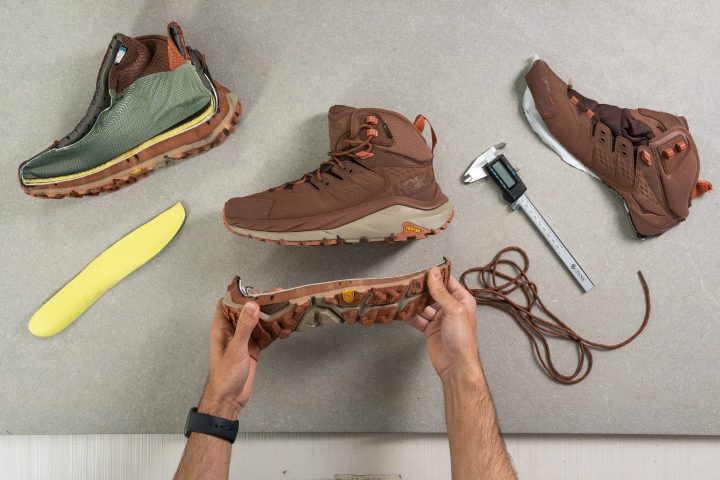
How not to slip during winter hikes
Know the terrain you plan to cover. Here are our general guidelines:
- For wet terrain slush and snow, choose very deep lugs (4mm and deeper).
- For a bit of everything, yet nothing too extreme, choose average lugs (4mm).
- For large flat rocks, choose shallower lugs (less than 4mm).
It could be enough for you to have a look at the outsole and notice whether the lugs are aggressive enough. However, if you’re not that experienced, look for our test results. One of our lab tests is measuring the thickness of the lugs.
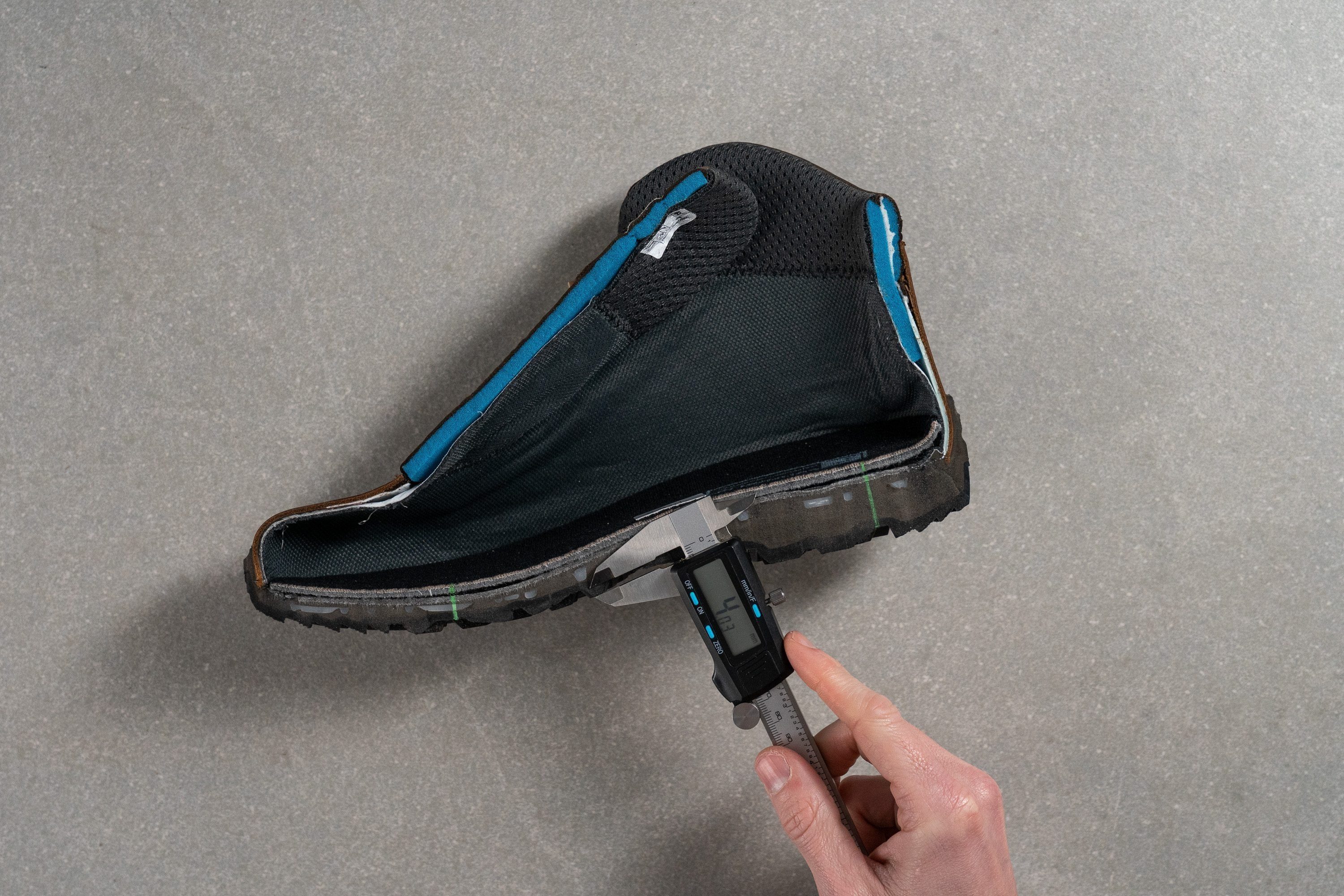
However, traction is not about lug depth only. Harder rubber is awesome when you need more protection or you’re covering sharp rocks or debris because it is more durable. Softer rubber, on the other hand, is way more pliable and usually stickier.
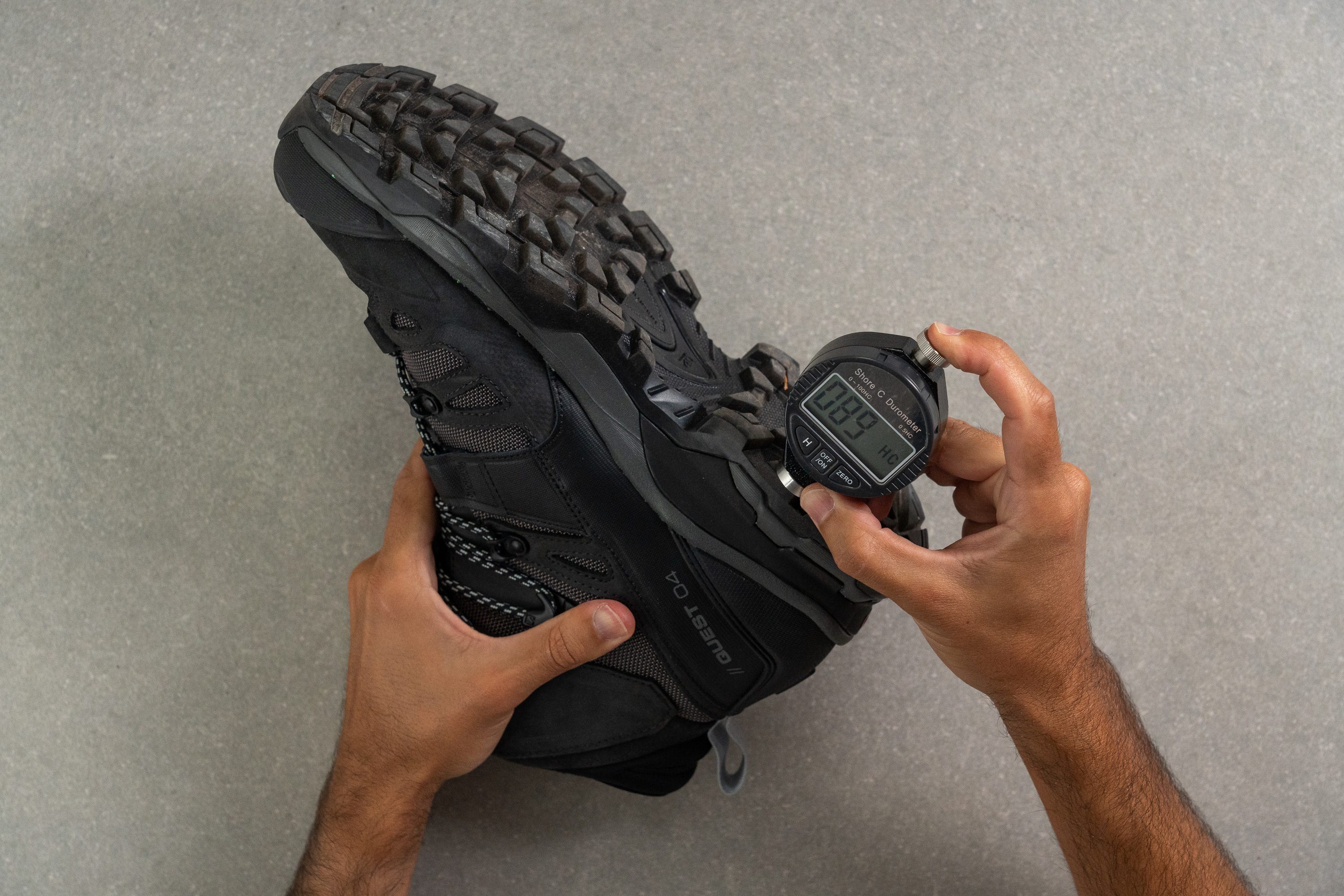
To examine this, we stick a durometer into the outsole rubber to measure its hardness. The bigger the number on the durometer, the harder the rubber.
Which waterproof membrane to choose
Choose the one that works and is a part of the hiking boot that you found the most comfortable. Proper fit is not negotiable.
Many brands develop their own waterproof membranes. Some simply write waterproof or WP in the boot name, while others promote the membrane names. You may have already seen some of these membranes:
- KEEN.Dry waterproof lining present in KEEN hiking footwear
- Omni-Tech used in Columbia hiking boots
- DannerDry waterproof membrane by Danner.
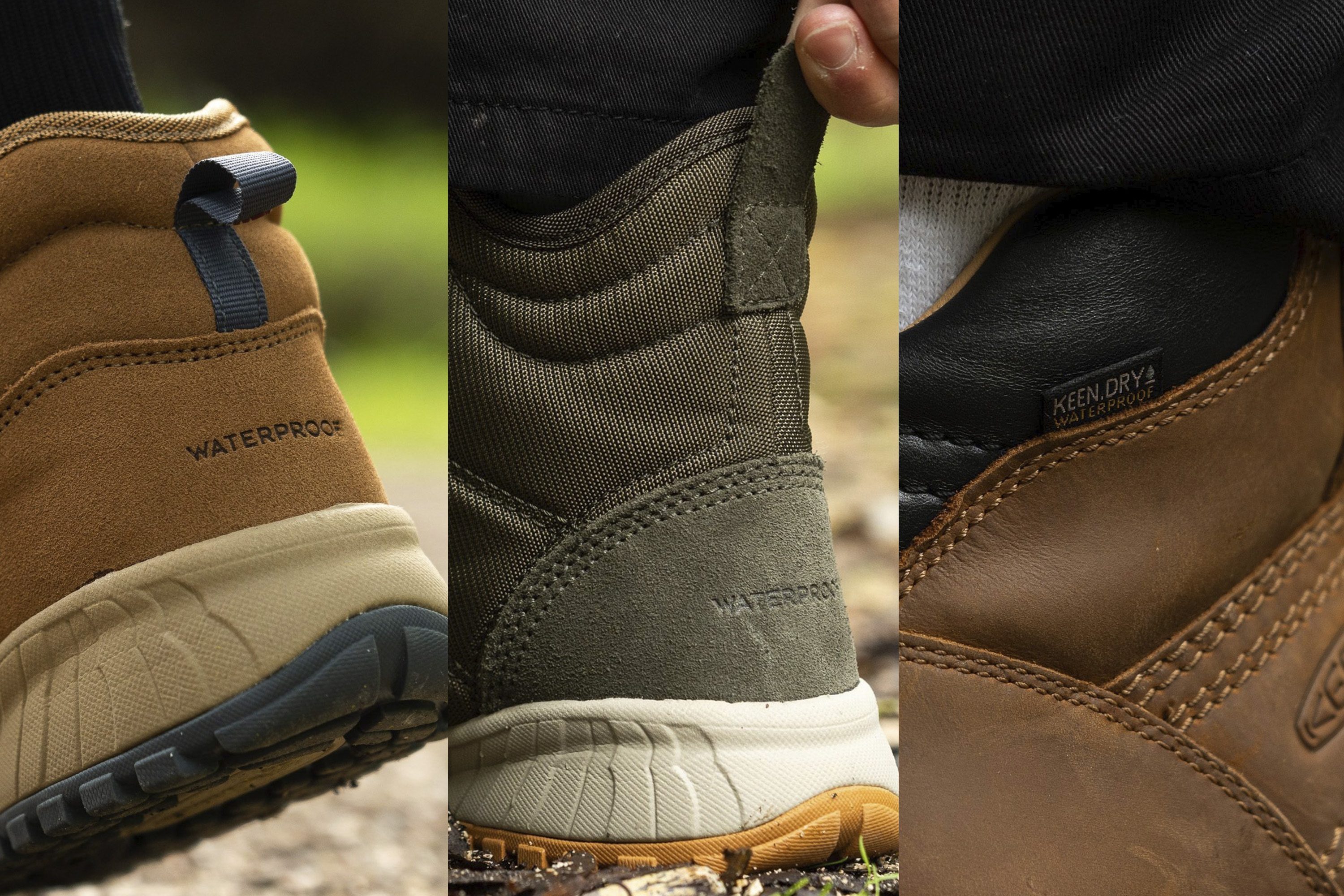
However, the most famous waterproof material is called Gore-Tex or GTX. Many brands use it and it is not present only in footwear but all sorts of outdoor apparel, backpacks, gaiters, etc.
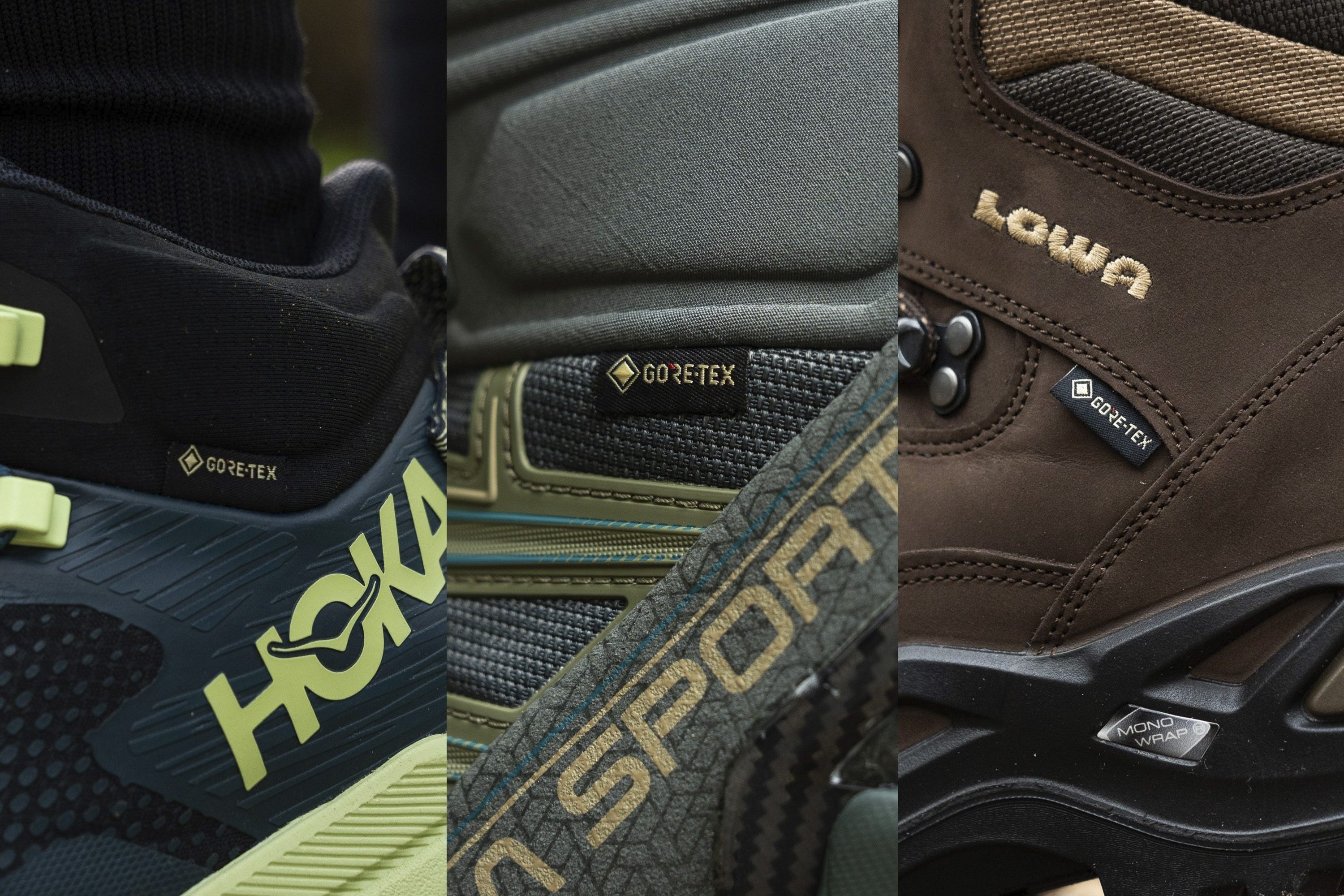
Warm means not breathable in winter hiking boots
Every hiking boot has an upper.
Waterproof hiking boots have an upper and a layer of waterproof material.
Winter hiking boots are like waterproof hiking boots, except they might have an additional layer of insulation.
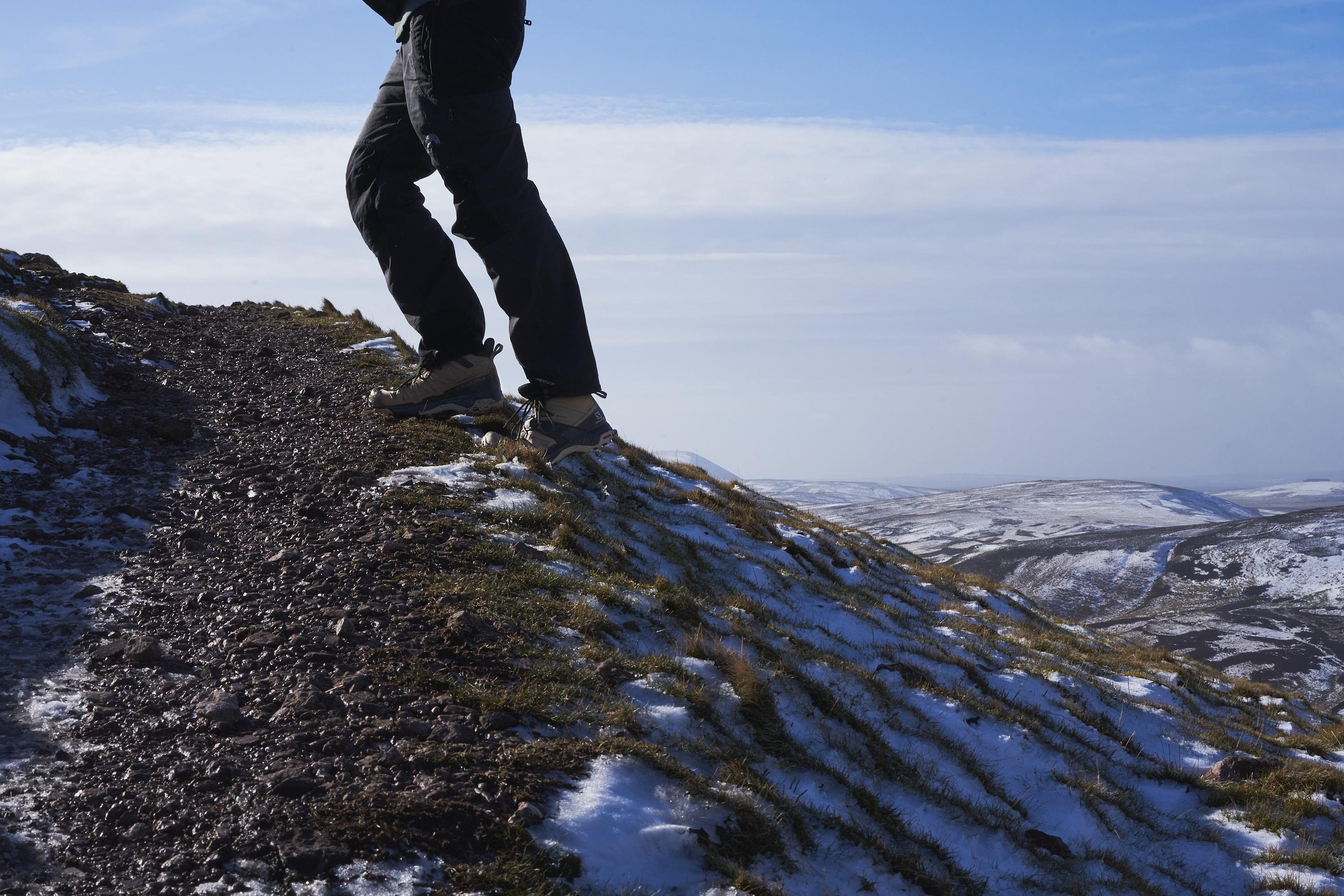
If you plan to hike in very cold weather, consider getting insulated boots. Insulation is measured in grams: how much that insulation weighs per square meter. You can see it specified as, for example, 100g insulation or 400g insulation.
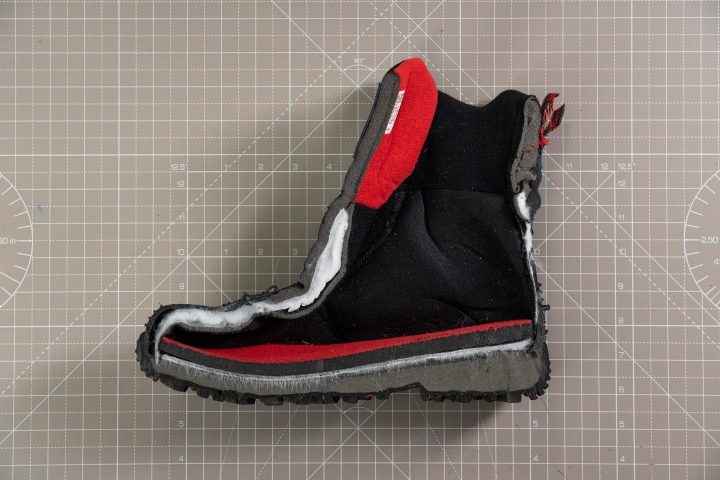
It does not mean that the boot itself is heavier 100g or 400g! But, the bigger the number, the more insulated the boot is. The same specifications are used in insulated clothing, so you can see down jacket with a 800g insulation.
|
Weight (Grams/ Square Meter) |
Recommended Temperature Range |
Season |
Recommended Uses |
|
100 grams |
40 to 50 degrees F |
3- season |
|
|
200 grams |
30 to 40 degrees F |
3-season |
|
|
400 grams |
14 to 30 degrees F |
3-season |
|
|
600 grams |
-5 to 10 degrees F |
Winter |
|
|
800 grams |
-20 to -10 degrees F |
Winter |
|
Given that it’s all happening at once (upper, waterproof upper, insulation layer), winter hiking boots are usually not breathable. When we test the breathability of hiking boots, we pump the smoke into them and watch where it comes out, and which pace, and how long it takes.
Non-breathable waterproof hiking boot (left) vs. breathable non-waterproof hiking boot (right)
Based on this, we rate the breathability of the boot on a 1-5 scale, with 1 being the least breathable and 5 being the most breathable.
To examine this even further, we look at the upper under the microscope. Waterproof uppers are always denser, while breathable uppers have a more loose structure, and some even feature ventilation holes.
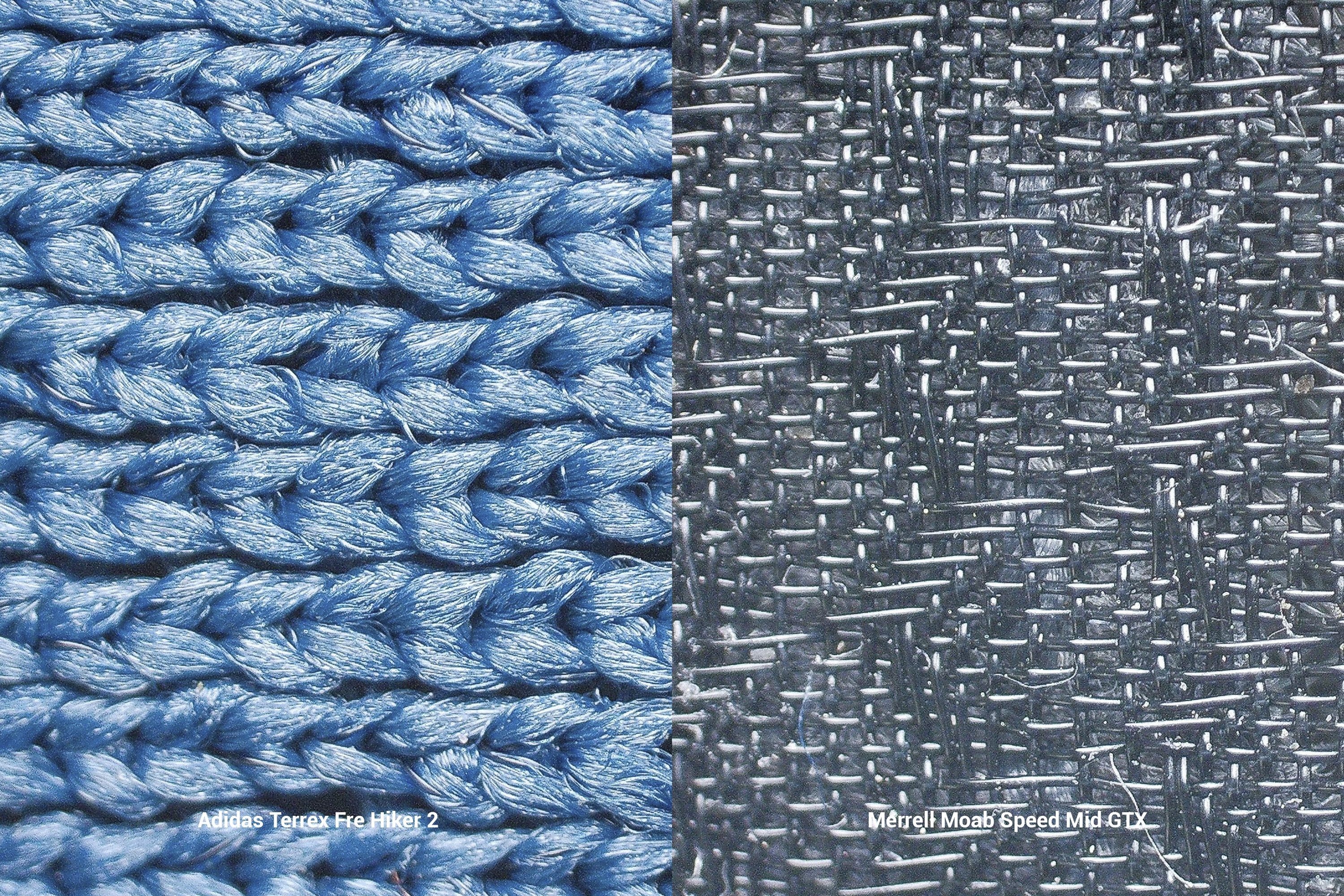
For contrast, look at how Gore-Tex uppers look under the microscope:
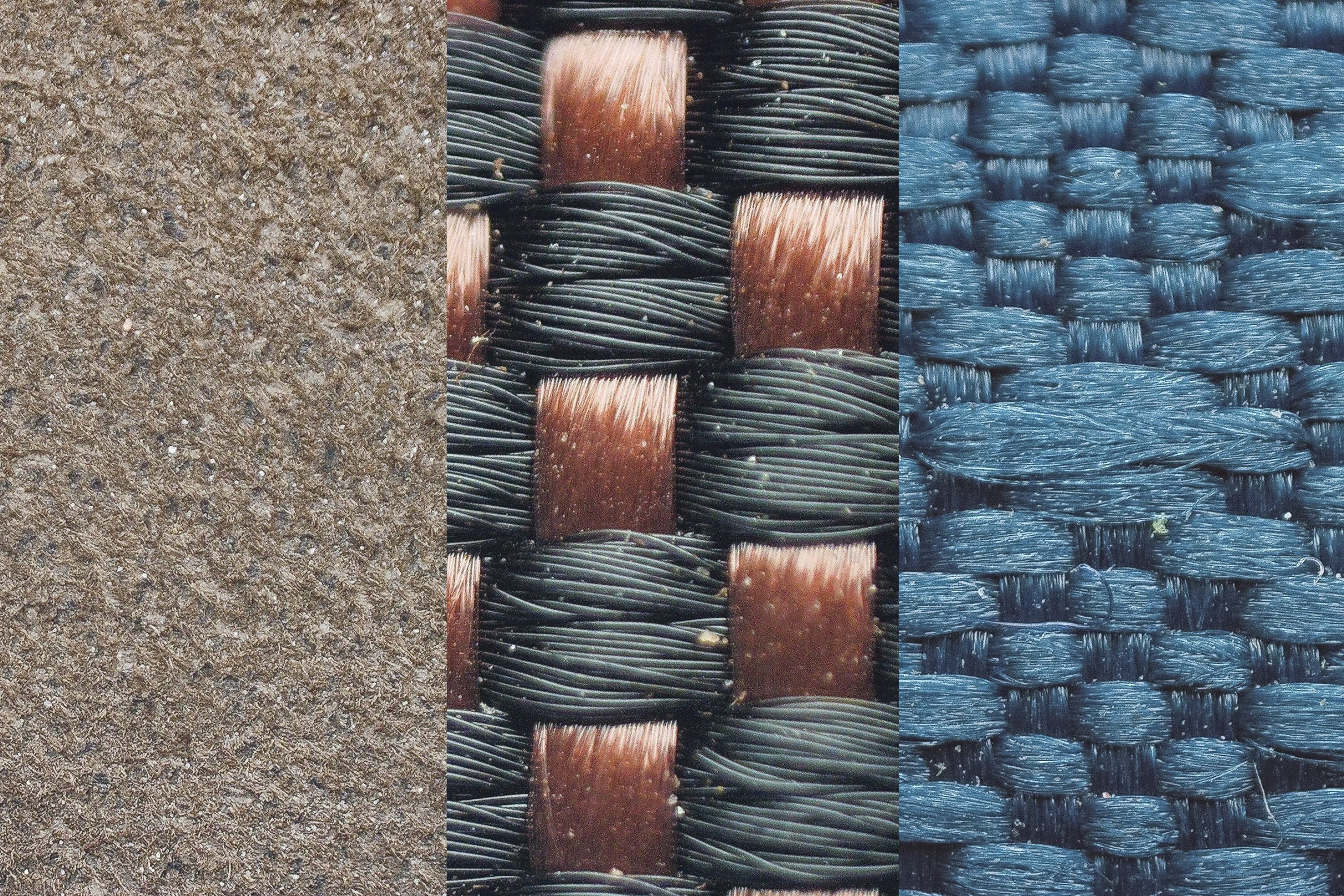
It is also interesting to understand what’s happening on the inside. In non-insulated boots, we can easily see a layer of waterproof material.
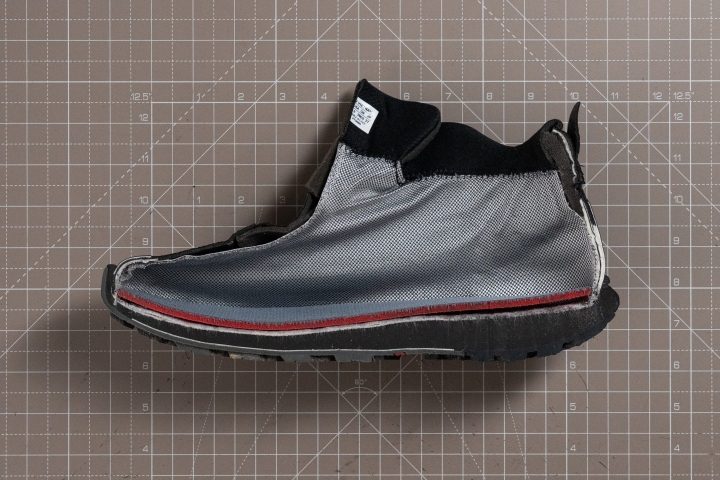
Not only that, but waterproof (winter) hiking boots tend to have a gusseted tongue. This tongue is connected to both sides of the upper, just under the eyelets. This prevents water (and snow, slush) from getting into the boot but also makes it more difficult for sweat to evaporate outside.
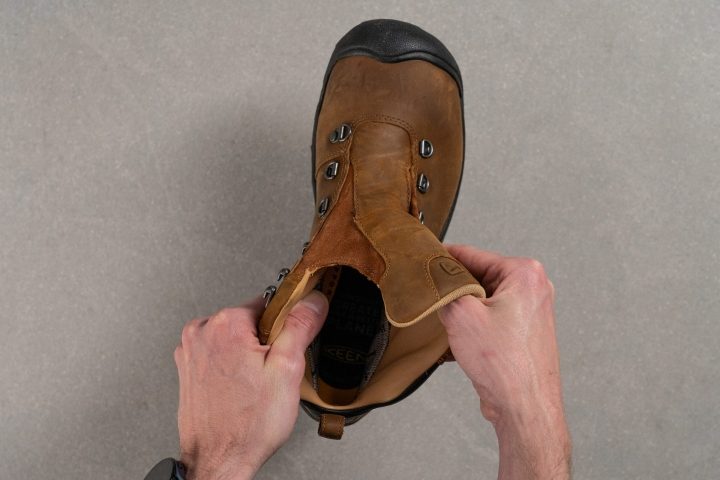
All of these contribute to the lousy breathability rating that winter hiking boots usually get.
Winter-friendly hiking boots: results of our tests
When discussing whether a boot is good for winter, it’s important to take into account how it will actually feel and perform at sub-zero temperatures. If it’s soft at room temperature, will it remain as soft when it’s freezing cold? Or will it firm up: a bit or a lot? The same goes for flexibility. Will it feel like a brick?
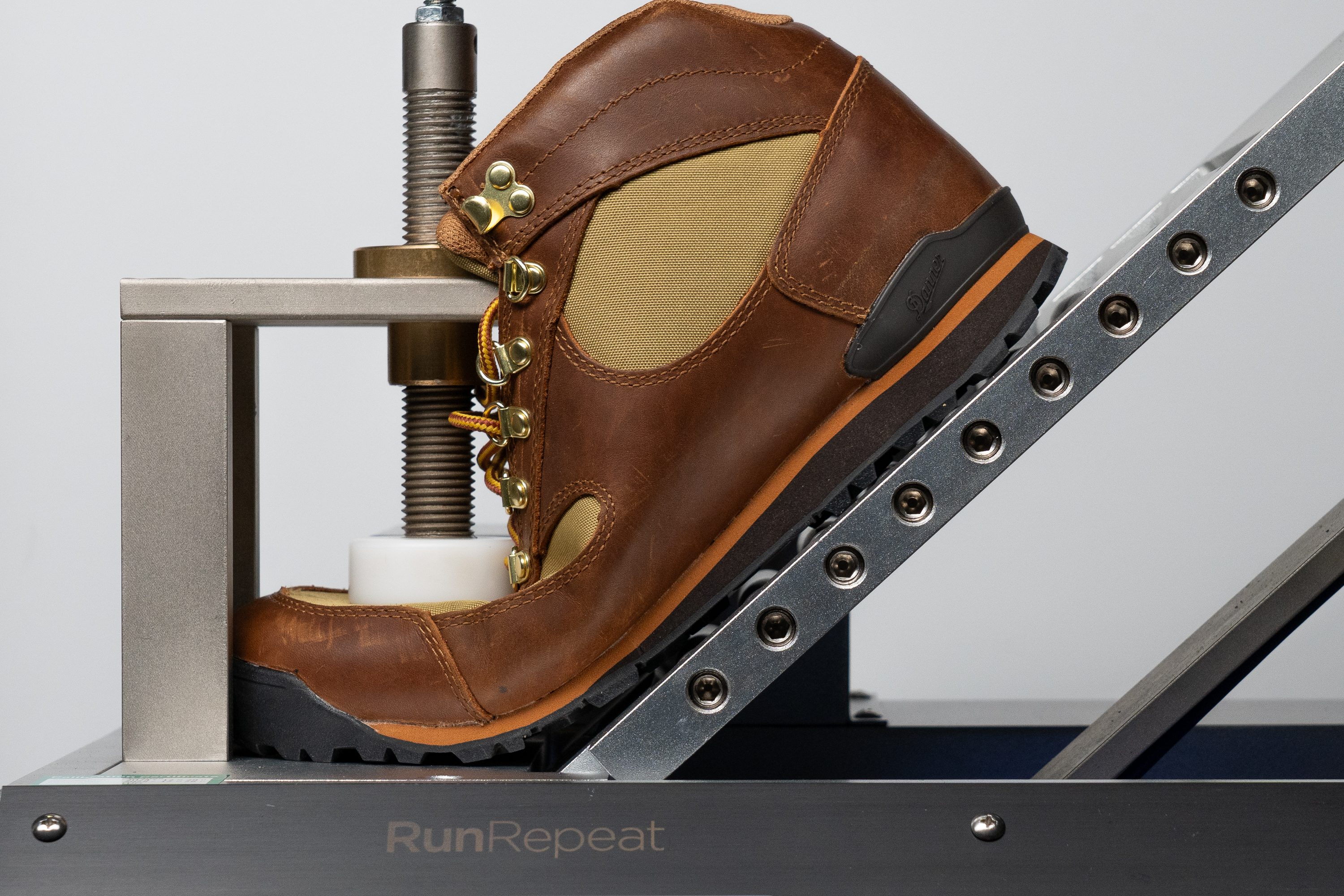
We anticipate that thanks to our freezer test. We text the flexibility of the boot and the softness of the midsole at room temperature first.
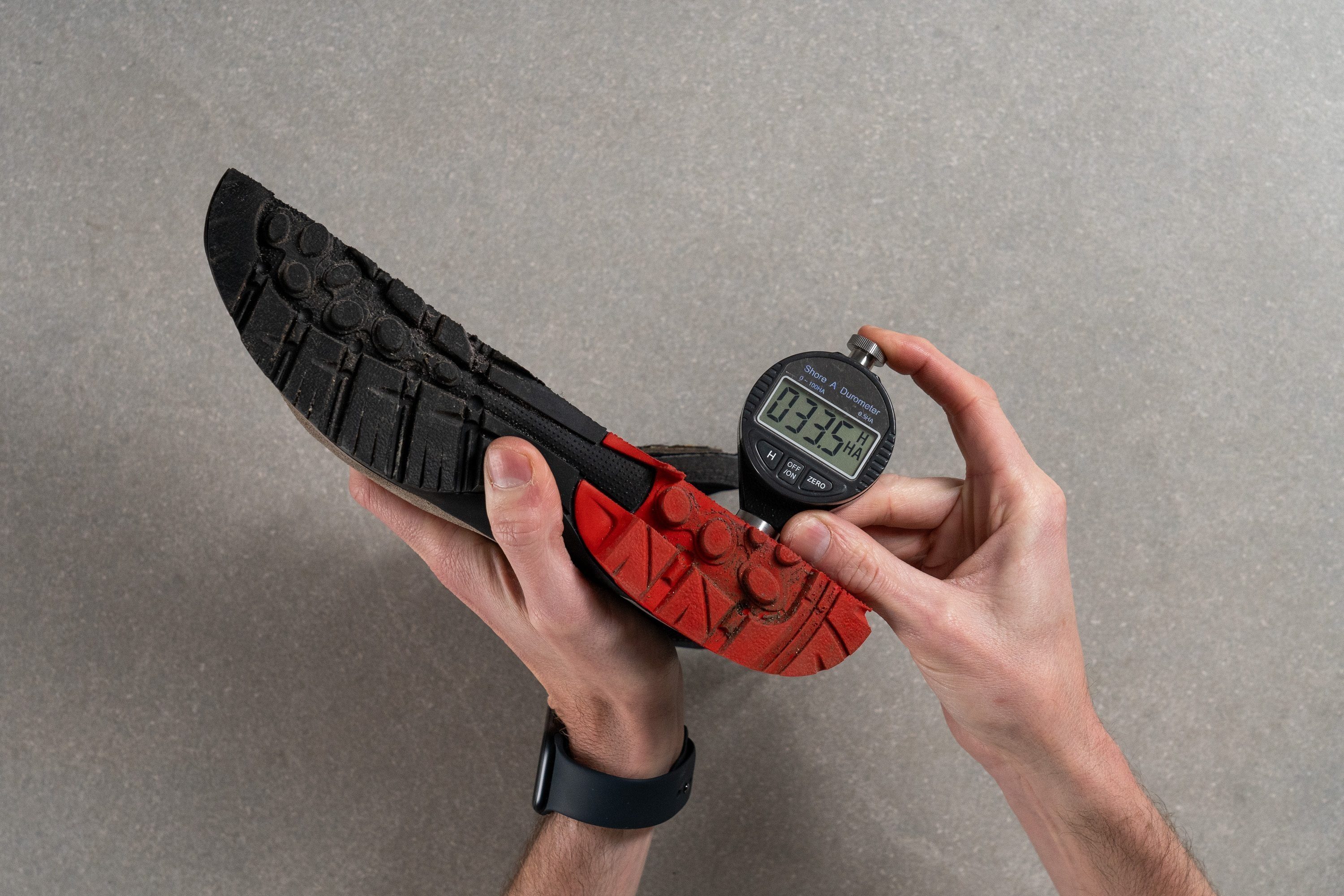
Sticking a shore A durometer into the midsole of a winter hiking boot to measure its softness
Then, we put the boot into the freezer for 20 minutes to simulate very cold weather.
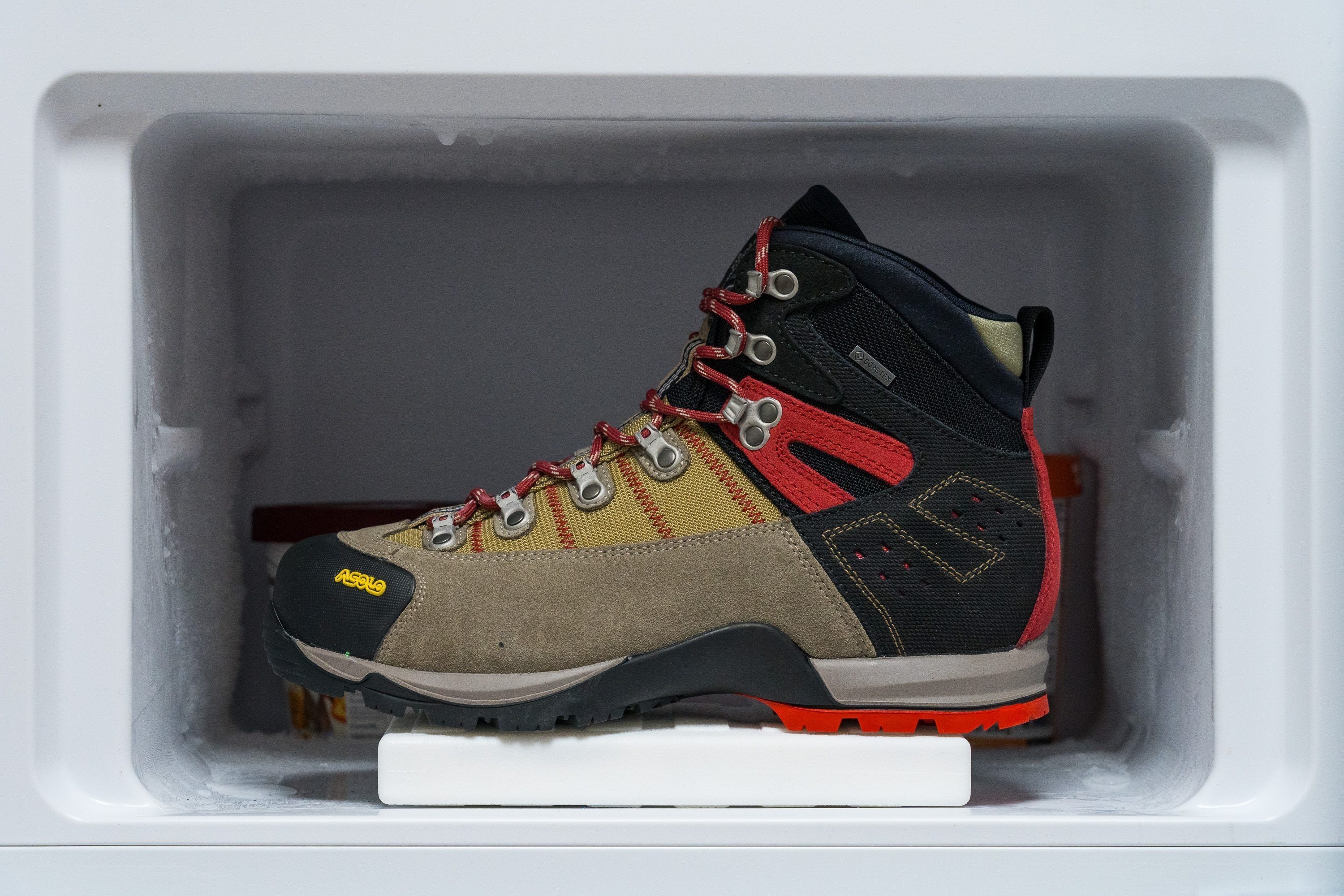
Then, we repeat the flexibility and softness tests and look at the difference in numbers: room temperature vs post-freezer. The bigger the difference, the worse the feel and performance of the boot in cold weather.
Find the perfect fit in winter hiking boots
In case you haven’t bought hiking boots before, here we list our guidelines that have shown to work well when it comes to nailing the proper fit:
- Go shopping for winter hiking boots in the afternoon or in the evening. We recommend this because it’s important to simulate similar conditions to those when hiking, and, later in the day, our feet swell naturally. Just like they do on the hikes.
- Try the boots on with hiking socks (not regular socks) and orthotics (if you’re using them).
- When you put the boots on, check if you have 1 thumb’s width of space behind your heel when you push the toes to the front. Or glue your heel to the back and sense if there’s room at the front.
- When you’ve laced the boots up, sense if there are any hotspots. Boots must not be tight or wide.
- If you’re at a specialized store that has a ramp covered with different materials like pebbles and artificial grass, use it to walk up and down. Keep in mind: your heel should not slip. And your feet should not slide to the sides inside the boots.
Before you embark on the hike, break in your new boots. Wear them for shorter periods of time so that you get used to them and they adjust a bit to your feet.
Wide toebox in winter hiking boots
If you have wider feet, we recommend looking at winter hiking boots with a wider toebox. Fortunately, we measure that as well in our lab. We don't measure the outside of the boots but the interior volume. We can do that thanks to our special gel that we pour into the boots and freeze.
Making the gel mold of the boots' interiors in RunRepeat lab
Once the gel has hardened up, we use a digital caliper to measure 1) shoe width where it's the widest, 2) toebox width at the big toe, 3) toebox height.
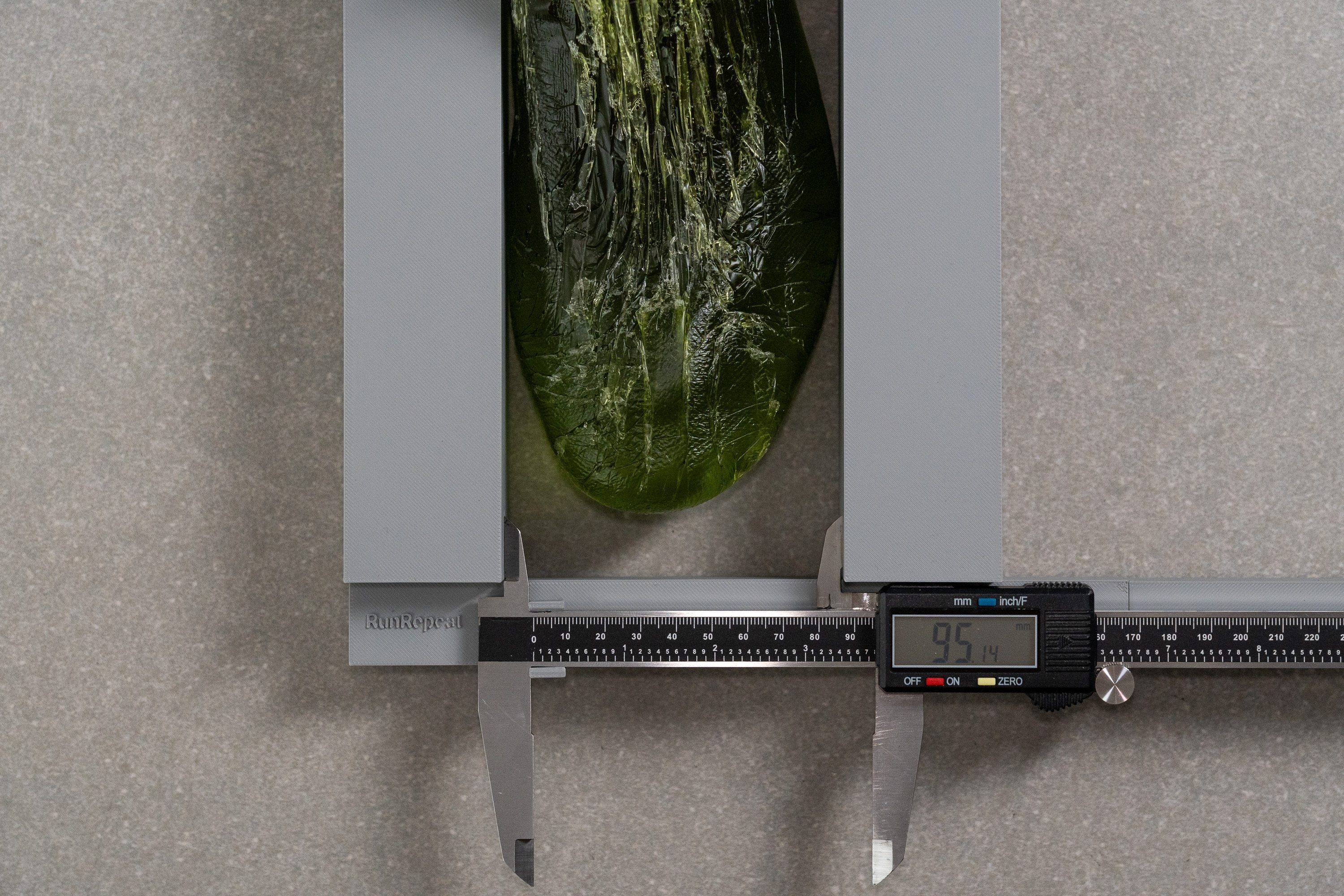
Then, we measure the toebox width. This width is very valuable for hikers who love to splay their toes or who have more voluminous feet towards the tip of the boot. Celtic, German, and Roman shapes would match that need (see the image below).

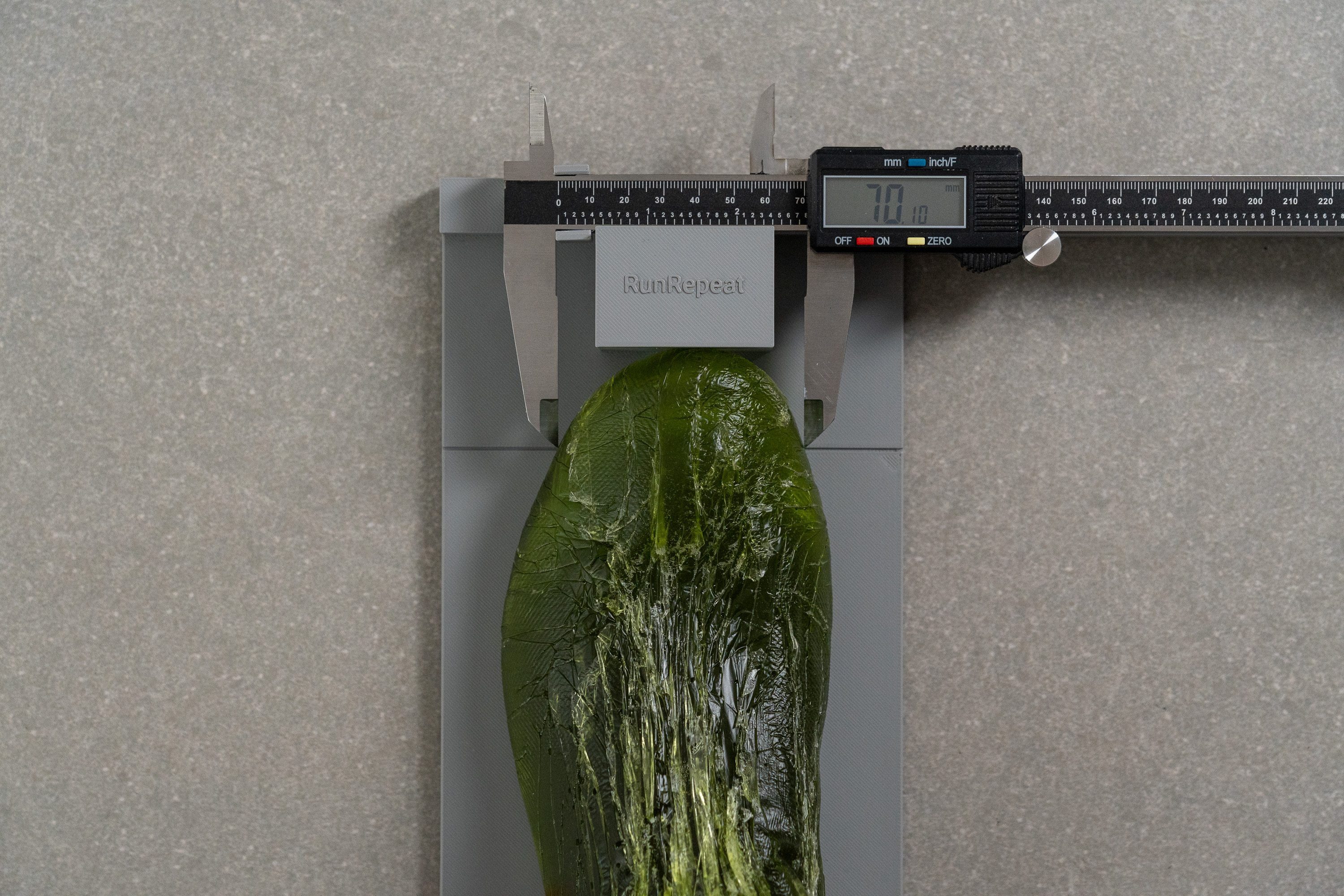
The volume of the toebox is also described by its height. We cut our gel mold in half lengthwise and then measure its height.
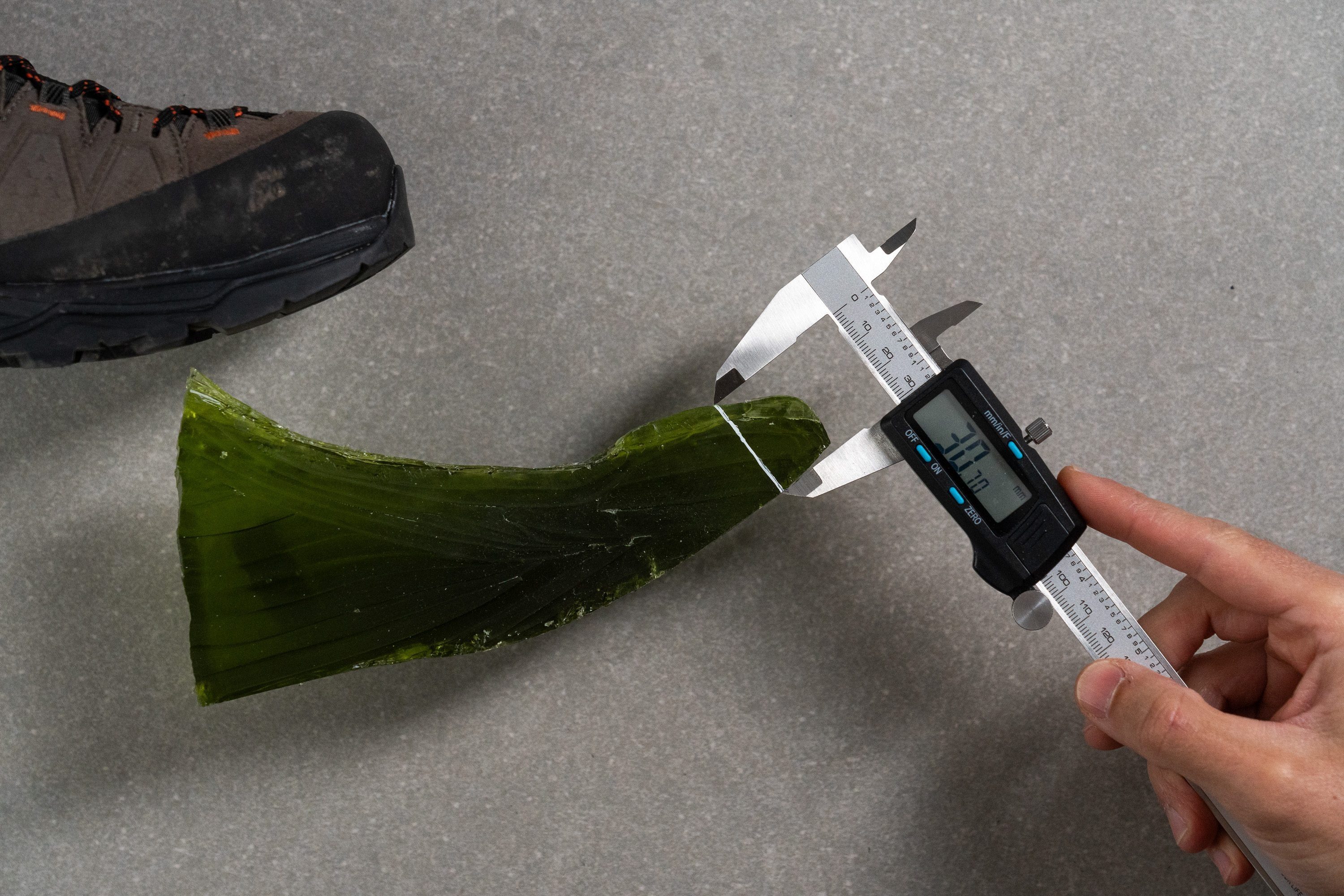
Gaiters are awesome!
If you know there will be A LOT of snow on the hike or you simply want to be EXTRA safe when it comes to keeping your feet and socks dry, we recommend using knee-high gaiters on the hike. These also come in waterproof (or Gore-Tex) versions and do a great job of keeping the moisture on the outside.
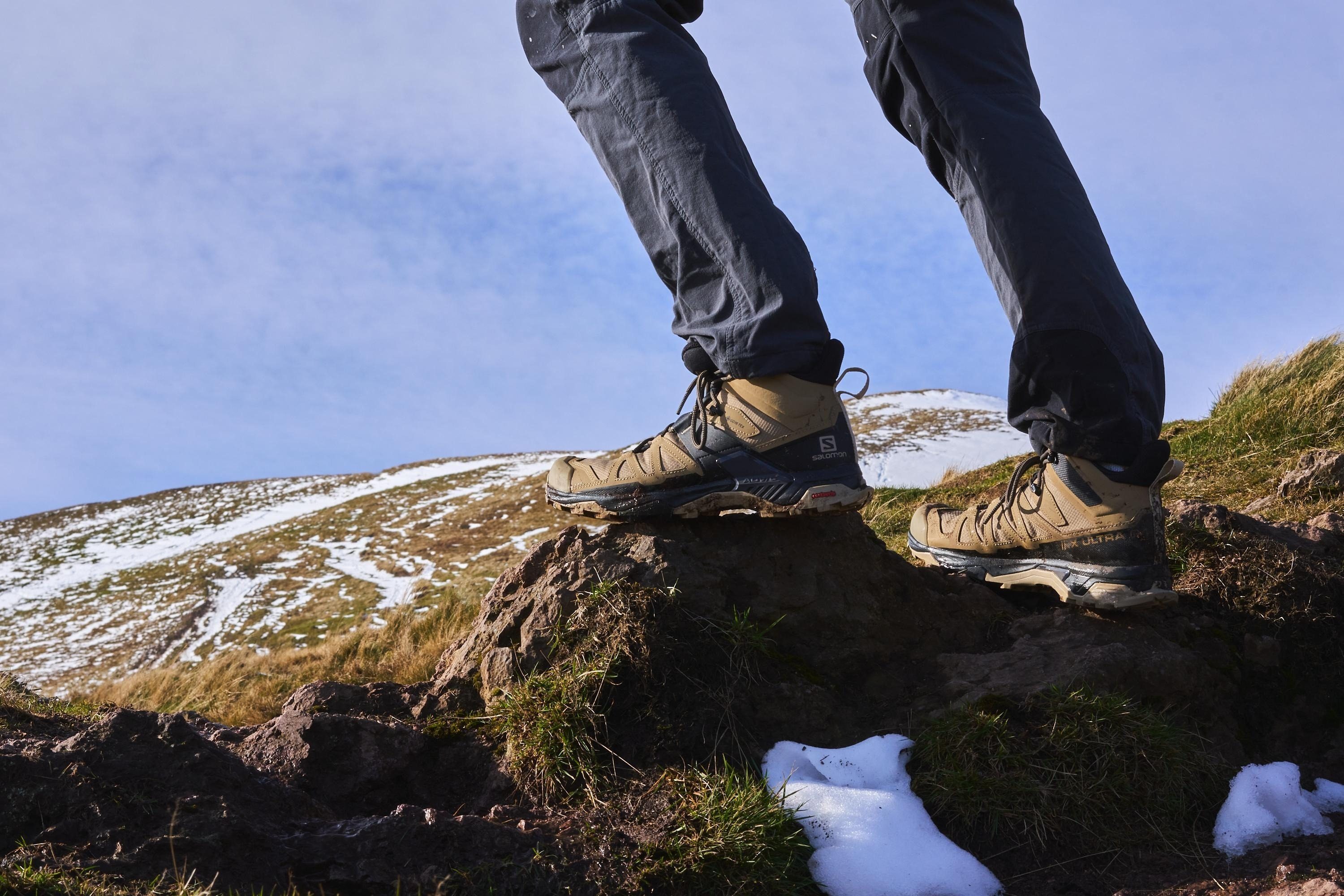
Whatever you decide, consider also getting wool or bamboo socks, as they have moisture-wicking properties and help a lot in very cold weather.

